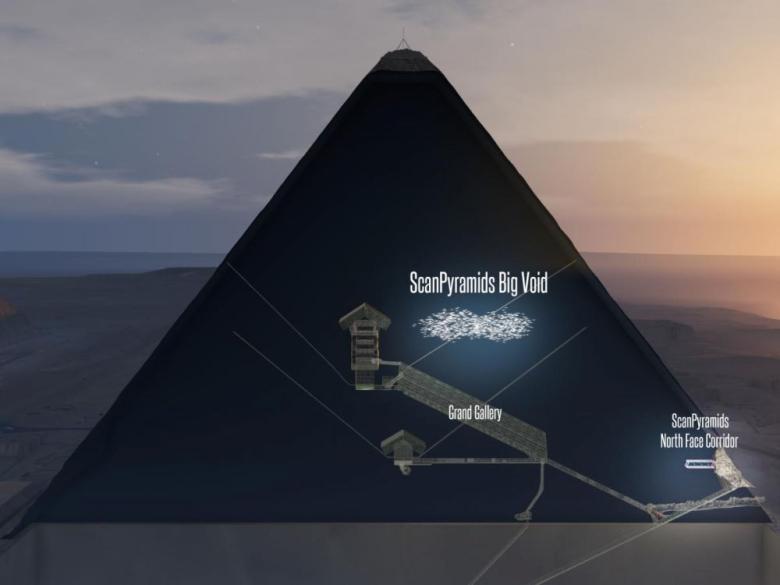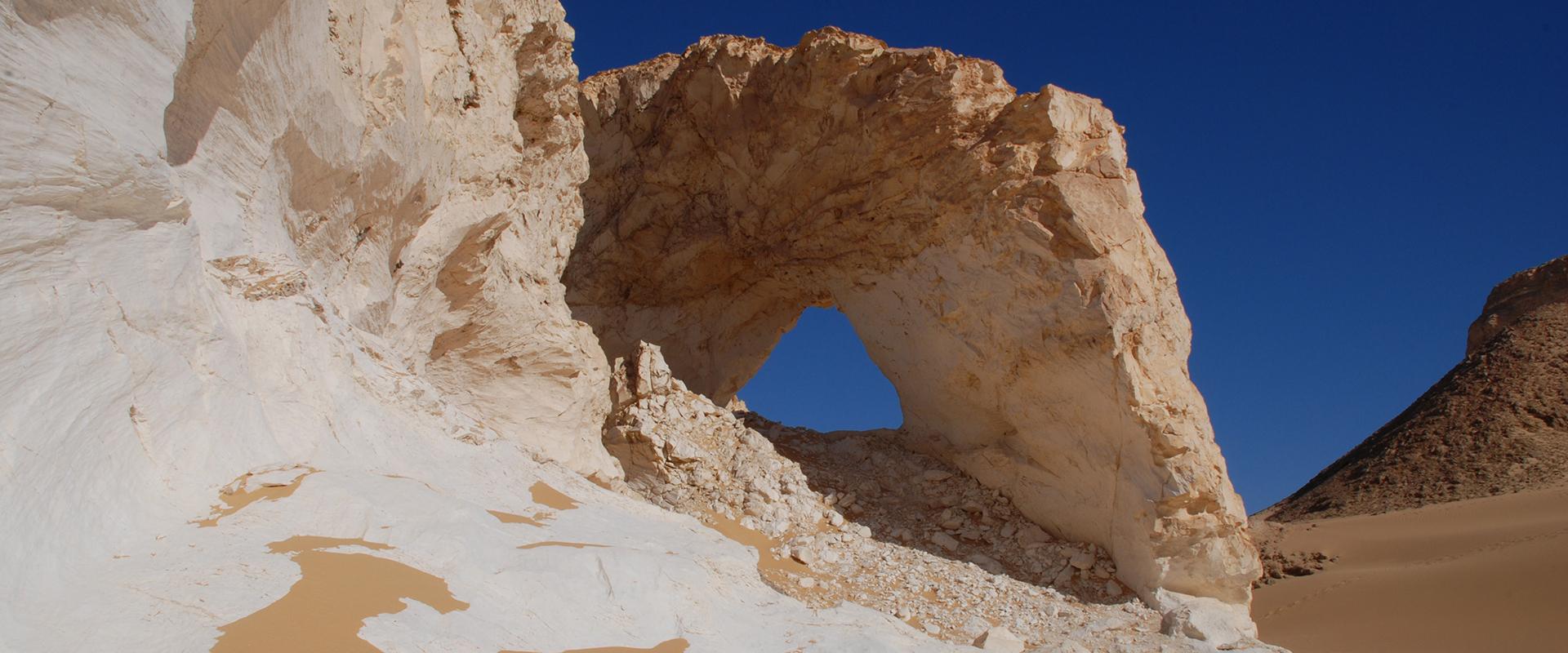
Cross-section of the pyramid of Kheops showing known cavities and those discovered during the ScanPyramids mission: one on the north face detected in 2016 and one just recently discovered above the main gallery.
© ScanPyramids
The aim of the ScanPyramids project, launched on 25 October 2015 by the HIP Institute and the University of Cairo, was to use non-destructive methods for surveys of large funerary monuments of the 4th Dynasty to better understand their architecture.
Discovering a cavity through muon imagery
The scanning method chosen to investigate the pyramid, which is 139 metres in height and 230 metres in length, was muography, an imaging technique using muons.
Muons are elementary particles produced in the atmosphere. The interactions between cosmic radiation and atoms in the atmosphere produce a continuous flow of muons that travel down to the Earth's surface and can continue down to several hundred metres below the surface until they are completely absorbed by the rock material.
Three muography teams, including one from France, were involved in this mission.
The muon imagery obtained conclusively showed a cavity more than 30 metres in length that had remained unknown since the pyramid's construction over 4,500 years ago. This discovery was a complete surprise to scientists, as no cavity of such a size had been discovered since the 19th century.
IRIS Instruments involvement in the ScanPyramids project
Simon Bouteille's thesis on the development and applications of micro-pattern gaseous detectors for muon tomography contributed significantly to the ScanPyramids project.
A post-doc researcher with IRIS Instruments, Simon Bouteille participated in a number of ScanPyramids tasks, including the design and construction of measurement instruments such as Micromegas detectors. He also contributed to data analysis, installation of the instruments at Gizeh and monitoring of their performance throughout data capture.







